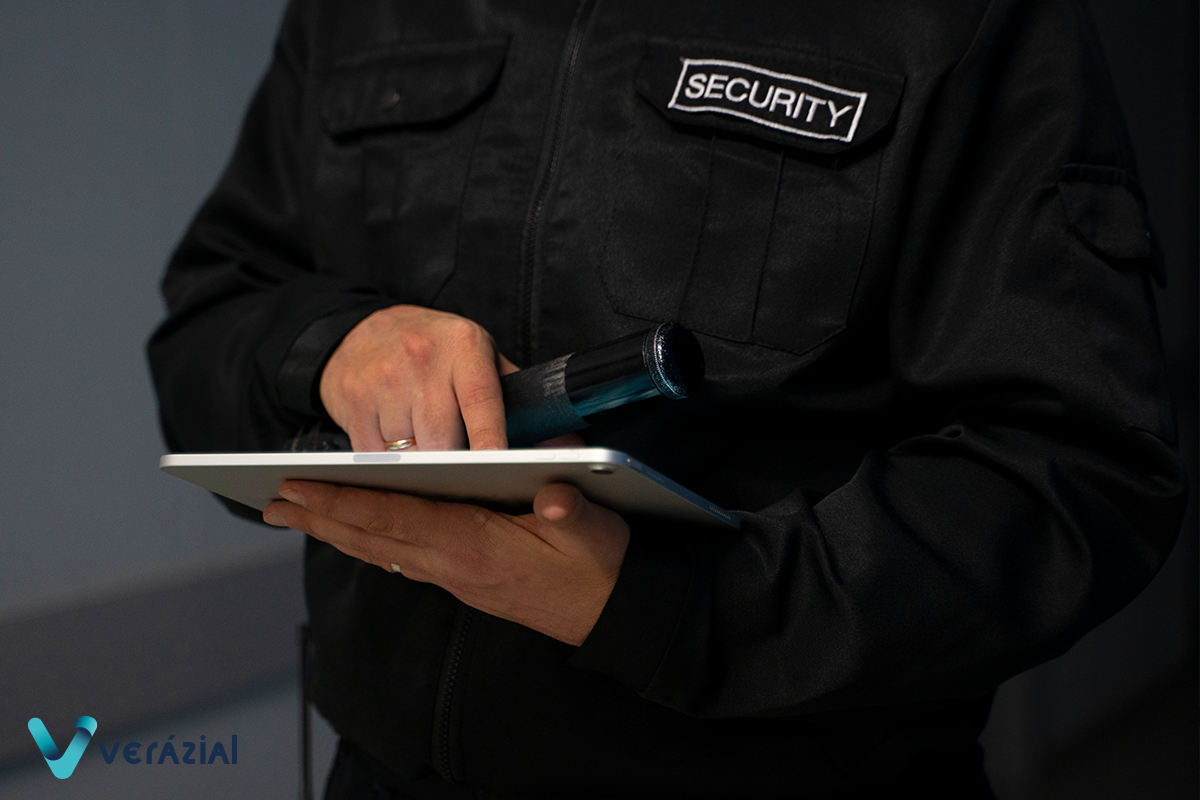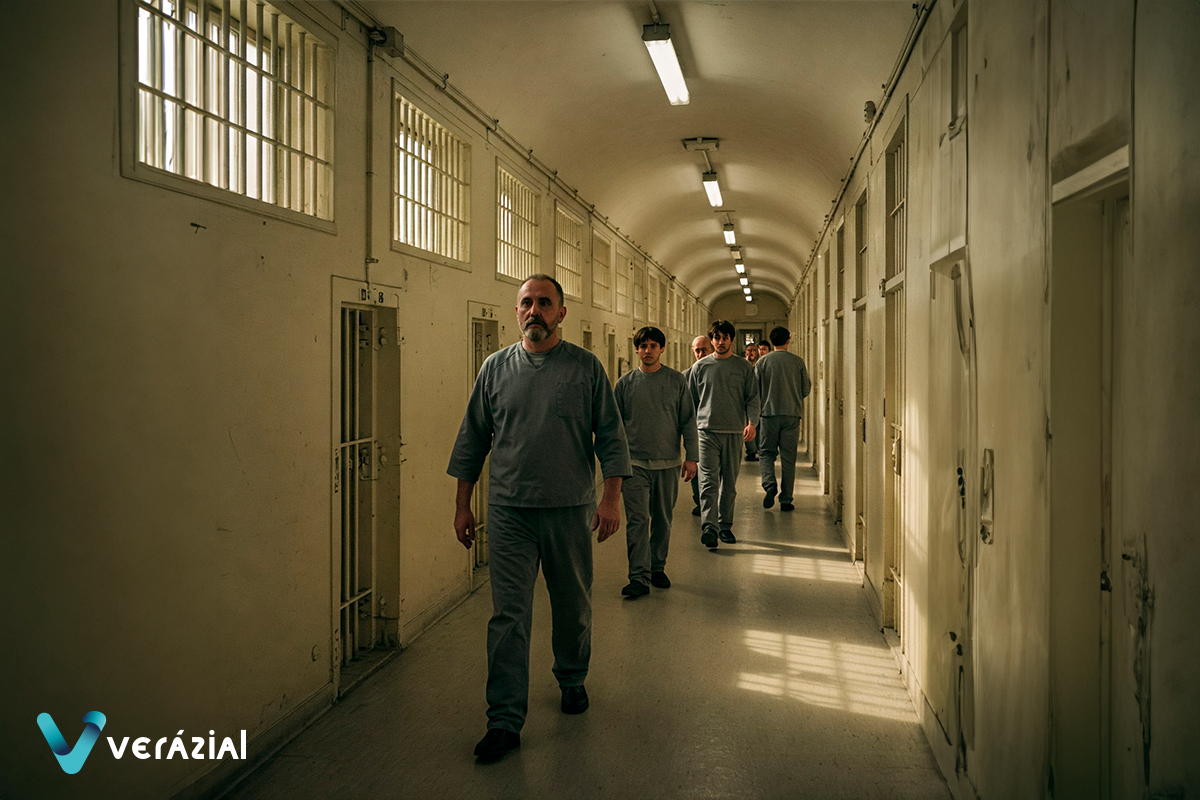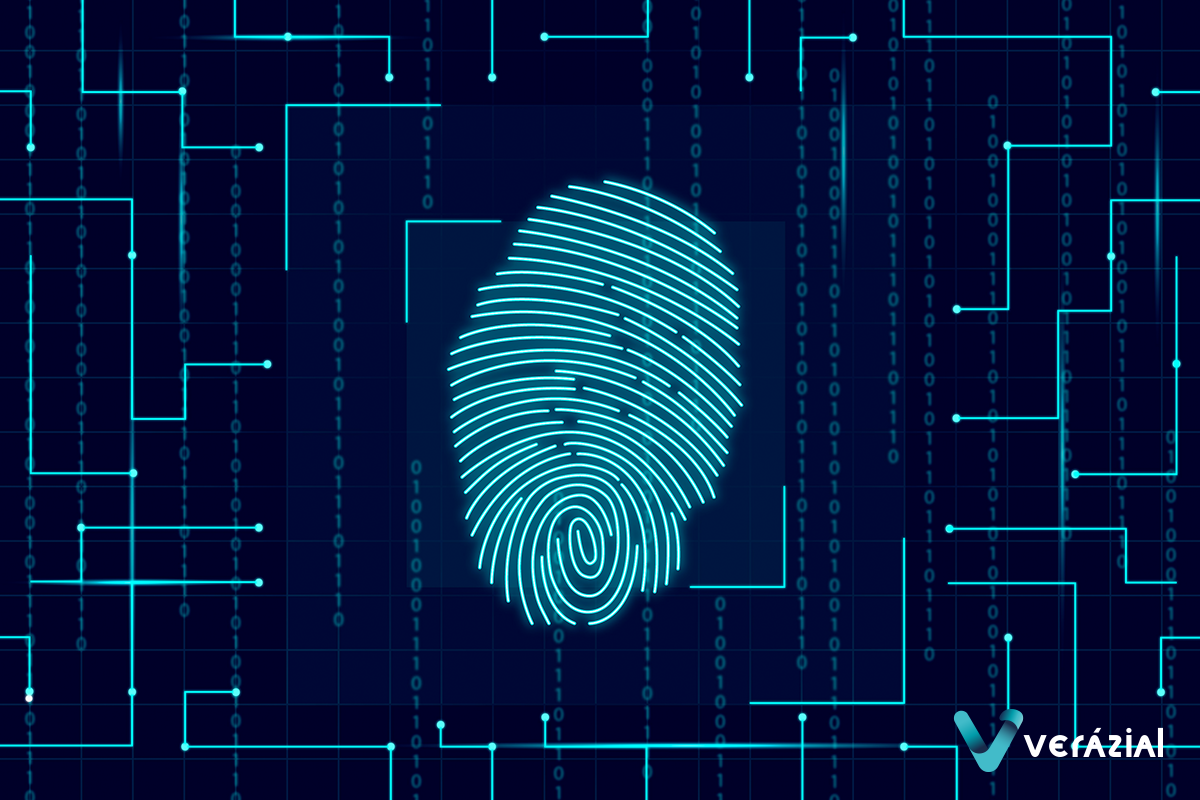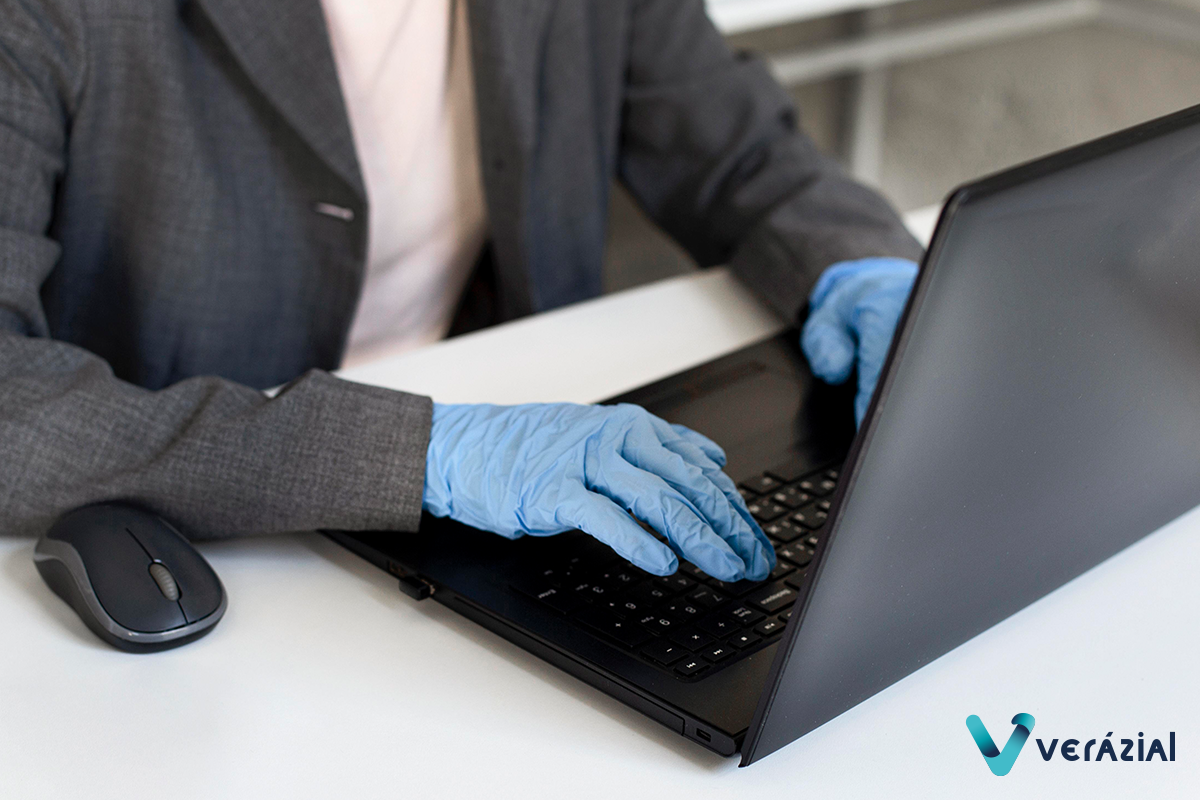Biometric technology: The solution to ensure secure identification in correctional facilities
Ensuring the authenticity of identities in prisons is crucial and current methods are slow and vulnerable. The effective solution lies in the implementation of biometric technologies, such as iris or fingerprint recognition.
The unfortunate increase in crime worldwide has put additional pressure on law enforcement to safely handle the growing prison population and the increasing number of identification records.
Correctional facilities, being high-security environments, require absolute control of all entries and exits to preserve security. Those who enter and leave regularly include facility employees, visitors (usually family, friends and lawyers), suppliers (such as food and equipment), as well as inmates on temporary release who must return.
It is essential that the security control at prison accesses guarantees the veracity of the identity of persons entering and leaving, as well as the existence of valid permits and justified causes.
In general, correctional facilities have entry and exit control carried out by police, prison officers or security guards, depending on the country. These professionals perform various functions to ensure security, and in technologically advanced environments, they have tools such as X-ray systems for body scanning, weapons and metal detectors, and package scanning systems that ensure the absence of unwanted materials
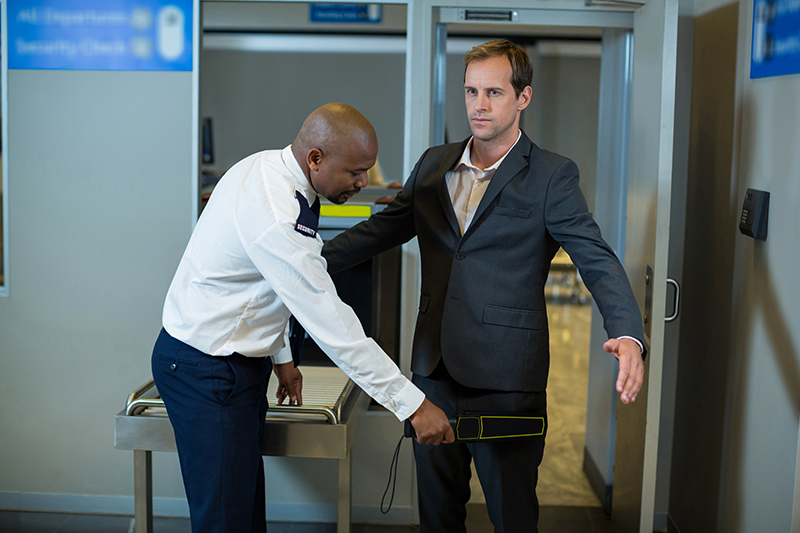
To ensure that people comply with the relevant regulations when entering or leaving the center, systems for identifying people and detailed records of all entries and exits are used.
Currently, in many correctional facilities, the common practice of conducting identity verification through manual and unsecure methods persists. This process involves officials requesting personal identification and performing a visual inspection of the document presented. This information is either recorded on paper forms or consulted on a computer to verify its authenticity. However, the crucial aspect is that the identity verification is done manually, which increases the risk of overlooking identity fraud. There is a possibility that the ID document may be forged or that the officer may make mistakes during the process, which compromises the security of the identification system in the prison.
At the same time, prison management technologies and systems have been introduced with the aim of improving compliance and strengthening security in the facilities. However, these systems have failed to keep up with changing regulations in the security industry and have not effectively addressed the complexity of managing internal databases to ensure reliable and accurate identifications.
This is why, regardless of the method of staff identification implemented in penitentiary centers, a series of alarming consequences persist and require immediate attention. Inmates continue to perpetrate identity theft as a strategy to evade arrest, even going to the extreme of resorting to physical violence, either to leave in place of another inmate or in place of a legitimate visitor. This practice not only undermines the security of the center, but also endangers the physical and emotional integrity of the individuals concerned. In addition, the entry of unauthorized individuals who manage to visit inmates is recorded, which generates a lack of accurate information on who has been visited and by whom, which represents a risk to security and control within the institution. The presence of people entering the prison under false pretenses, either posing as workers or suppliers, poses serious threats, as they can access sensitive areas that could be manipulated or damaged, compromising the security of both inmates and prison staff. On the other hand, the slow process of identifying and registering visitors contributes to the formation of long lines of visitors in prisons, which not only affects operational efficiency, but also creates situations conducive to disruption of order and potential conflicts among visitors.
The reality of these challenges became evident in the unfortunate incident of December 23, 2023 in the prison of Alcalá Meco, Madrid, Spain, as highlighted in media coverage, including the newspaper “El País” (Lopez-Fonseca, 2023). In this event, a hitman managed to evade security controls by integrating himself among the family members who were visiting him. According to information provided by another media outlet, the newspaper “El Correo” (Sáiz-Pardo, 2023), the Automated Identification System (SIA) had been inoperative for two months, an unacceptable error in an environment where maximum security is required.
This incident, along with others that may go unnoticed in the daily routine of prisons worldwide, highlights the urgency of strengthening security protocols in prisons not only in Spain, but also in the rest of the world. The need to implement advanced solutions and controls becomes even more evident in the face of such challenges.
How can accurate identification of individuals in prisons be ensured?
The optimal solution to address the problems of secure identification of individuals is the implementation of biometric technologies, which use unique characteristics of our body, such as fingerprints, face, voice or iris, to accurately and securely identify each individual.
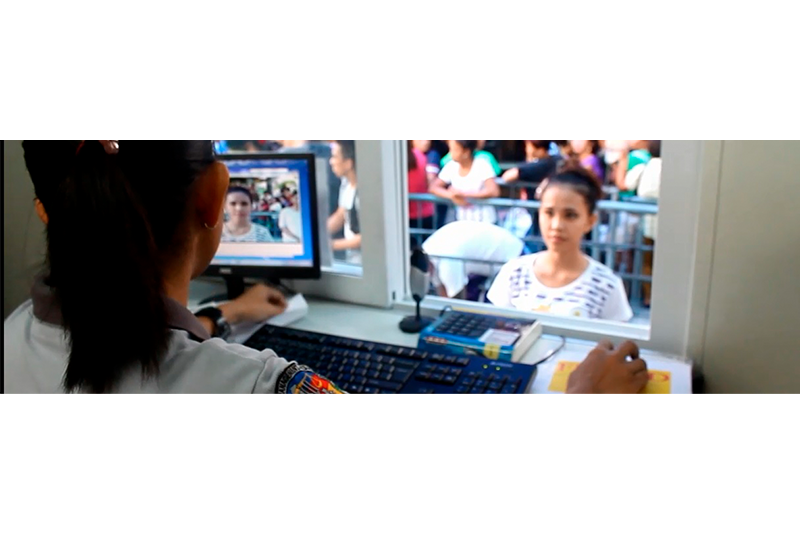
The adoption of these biometric solutions in environments such as prisons has significant benefits. It eliminates the possibility of identity theft by inmates, completely eliminating the associated damage. It also ensures that visitors, workers or suppliers are authorized persons, helping to predict behavior and identify connections between inmates and visitors. The implementation of these technologies reduces queues and waiting times for visitors through exhaustive and rapid control of entrances and exits. In addition, it provides reliable and instantaneous information that can be efficiently shared with other public security agencies.
Discover Verázial ID Prisons, a secure solution specially designed for correctional facilities that comprehensively addresses the identification challenges of inmates, staff, visitors and outsiders in these environments.
Contact us for a demonstration and/or personalized study.
References
- Airport security officer using a hand held metal [Freepik]
Biometric technology: The solution to ensure secure identification in correctional facilities
Ensuring the authenticity of identities in prisons is crucial and current methods are slow and vulnerable. The effective solution lies in the implementation of biometric technologies, such as iris or fingerprint recognition.
The unfortunate increase in crime worldwide has put additional pressure on law enforcement to safely handle the growing prison population and the increasing number of identification records.
Correctional facilities, being high-security environments, require absolute control of all entries and exits to preserve security. Those who enter and leave regularly include facility employees, visitors (usually family, friends and lawyers), suppliers (such as food and equipment), as well as inmates on temporary release who must return.
It is essential that the security control at prison accesses guarantees the veracity of the identity of persons entering and leaving, as well as the existence of valid permits and justified causes.
In general, correctional facilities have entry and exit control carried out by police, prison officers or security guards, depending on the country. These professionals perform various functions to ensure security, and in technologically advanced environments, they have tools such as X-ray systems for body scanning, weapons and metal detectors, and package scanning systems that ensure the absence of unwanted materials

To ensure that people comply with the relevant regulations when entering or leaving the center, systems for identifying people and detailed records of all entries and exits are used.
Currently, in many correctional facilities, the common practice of conducting identity verification through manual and unsecure methods persists. This process involves officials requesting personal identification and performing a visual inspection of the document presented. This information is either recorded on paper forms or consulted on a computer to verify its authenticity. However, the crucial aspect is that the identity verification is done manually, which increases the risk of overlooking identity fraud. There is a possibility that the ID document may be forged or that the officer may make mistakes during the process, which compromises the security of the identification system in the prison.
At the same time, prison management technologies and systems have been introduced with the aim of improving compliance and strengthening security in the facilities. However, these systems have failed to keep up with changing regulations in the security industry and have not effectively addressed the complexity of managing internal databases to ensure reliable and accurate identifications.
This is why, regardless of the method of staff identification implemented in penitentiary centers, a series of alarming consequences persist and require immediate attention. Inmates continue to perpetrate identity theft as a strategy to evade arrest, even going to the extreme of resorting to physical violence, either to leave in place of another inmate or in place of a legitimate visitor. This practice not only undermines the security of the center, but also endangers the physical and emotional integrity of the individuals concerned. In addition, the entry of unauthorized individuals who manage to visit inmates is recorded, which generates a lack of accurate information on who has been visited and by whom, which represents a risk to security and control within the institution. The presence of people entering the prison under false pretenses, either posing as workers or suppliers, poses serious threats, as they can access sensitive areas that could be manipulated or damaged, compromising the security of both inmates and prison staff. On the other hand, the slow process of identifying and registering visitors contributes to the formation of long lines of visitors in prisons, which not only affects operational efficiency, but also creates situations conducive to disruption of order and potential conflicts among visitors.
The reality of these challenges became evident in the unfortunate incident of December 23, 2023 in the prison of Alcalá Meco, Madrid, Spain, as highlighted in media coverage, including the newspaper “El País” (Lopez-Fonseca, 2023). In this event, a hitman managed to evade security controls by integrating himself among the family members who were visiting him. According to information provided by another media outlet, the newspaper “El Correo” (Sáiz-Pardo, 2023), the Automated Identification System (SIA) had been inoperative for two months, an unacceptable error in an environment where maximum security is required.
This incident, along with others that may go unnoticed in the daily routine of prisons worldwide, highlights the urgency of strengthening security protocols in prisons not only in Spain, but also in the rest of the world. The need to implement advanced solutions and controls becomes even more evident in the face of such challenges.
How can accurate identification of individuals in prisons be ensured?
The optimal solution to address the problems of secure identification of individuals is the implementation of biometric technologies, which use unique characteristics of our body, such as fingerprints, face, voice or iris, to accurately and securely identify each individual.

The adoption of these biometric solutions in environments such as prisons has significant benefits. It eliminates the possibility of identity theft by inmates, completely eliminating the associated damage. It also ensures that visitors, workers or suppliers are authorized persons, helping to predict behavior and identify connections between inmates and visitors. The implementation of these technologies reduces queues and waiting times for visitors through exhaustive and rapid control of entrances and exits. In addition, it provides reliable and instantaneous information that can be efficiently shared with other public security agencies.
Discover Verázial ID Prisons, a secure solution specially designed for correctional facilities that comprehensively addresses the identification challenges of inmates, staff, visitors and outsiders in these environments.
Contact us for a demonstration and/or personalized study.
References
- Airport security officer using a hand held metal [Freepik]
Biometric technology: The solution to ensure secure identification in correctional facilities
Ensuring the authenticity of identities in prisons is crucial and current methods are slow and vulnerable. The effective solution lies in the implementation of biometric technologies, such as iris or fingerprint recognition.
The unfortunate increase in crime worldwide has put additional pressure on law enforcement to safely handle the growing prison population and the increasing number of identification records.
Correctional facilities, being high-security environments, require absolute control of all entries and exits to preserve security. Those who enter and leave regularly include facility employees, visitors (usually family, friends and lawyers), suppliers (such as food and equipment), as well as inmates on temporary release who must return.
It is essential that the security control at prison accesses guarantees the veracity of the identity of persons entering and leaving, as well as the existence of valid permits and justified causes.
In general, correctional facilities have entry and exit control carried out by police, prison officers or security guards, depending on the country. These professionals perform various functions to ensure security, and in technologically advanced environments, they have tools such as X-ray systems for body scanning, weapons and metal detectors, and package scanning systems that ensure the absence of unwanted materials

To ensure that people comply with the relevant regulations when entering or leaving the center, systems for identifying people and detailed records of all entries and exits are used.
Currently, in many correctional facilities, the common practice of conducting identity verification through manual and unsecure methods persists. This process involves officials requesting personal identification and performing a visual inspection of the document presented. This information is either recorded on paper forms or consulted on a computer to verify its authenticity. However, the crucial aspect is that the identity verification is done manually, which increases the risk of overlooking identity fraud. There is a possibility that the ID document may be forged or that the officer may make mistakes during the process, which compromises the security of the identification system in the prison.
At the same time, prison management technologies and systems have been introduced with the aim of improving compliance and strengthening security in the facilities. However, these systems have failed to keep up with changing regulations in the security industry and have not effectively addressed the complexity of managing internal databases to ensure reliable and accurate identifications.
This is why, regardless of the method of staff identification implemented in penitentiary centers, a series of alarming consequences persist and require immediate attention. Inmates continue to perpetrate identity theft as a strategy to evade arrest, even going to the extreme of resorting to physical violence, either to leave in place of another inmate or in place of a legitimate visitor. This practice not only undermines the security of the center, but also endangers the physical and emotional integrity of the individuals concerned. In addition, the entry of unauthorized individuals who manage to visit inmates is recorded, which generates a lack of accurate information on who has been visited and by whom, which represents a risk to security and control within the institution. The presence of people entering the prison under false pretenses, either posing as workers or suppliers, poses serious threats, as they can access sensitive areas that could be manipulated or damaged, compromising the security of both inmates and prison staff. On the other hand, the slow process of identifying and registering visitors contributes to the formation of long lines of visitors in prisons, which not only affects operational efficiency, but also creates situations conducive to disruption of order and potential conflicts among visitors.
The reality of these challenges became evident in the unfortunate incident of December 23, 2023 in the prison of Alcalá Meco, Madrid, Spain, as highlighted in media coverage, including the newspaper “El País” (Lopez-Fonseca, 2023). In this event, a hitman managed to evade security controls by integrating himself among the family members who were visiting him. According to information provided by another media outlet, the newspaper “El Correo” (Sáiz-Pardo, 2023), the Automated Identification System (SIA) had been inoperative for two months, an unacceptable error in an environment where maximum security is required.
This incident, along with others that may go unnoticed in the daily routine of prisons worldwide, highlights the urgency of strengthening security protocols in prisons not only in Spain, but also in the rest of the world. The need to implement advanced solutions and controls becomes even more evident in the face of such challenges.
How can accurate identification of individuals in prisons be ensured?
The optimal solution to address the problems of secure identification of individuals is the implementation of biometric technologies, which use unique characteristics of our body, such as fingerprints, face, voice or iris, to accurately and securely identify each individual.

The adoption of these biometric solutions in environments such as prisons has significant benefits. It eliminates the possibility of identity theft by inmates, completely eliminating the associated damage. It also ensures that visitors, workers or suppliers are authorized persons, helping to predict behavior and identify connections between inmates and visitors. The implementation of these technologies reduces queues and waiting times for visitors through exhaustive and rapid control of entrances and exits. In addition, it provides reliable and instantaneous information that can be efficiently shared with other public security agencies.
Discover Verázial ID Prisons, a secure solution specially designed for correctional facilities that comprehensively addresses the identification challenges of inmates, staff, visitors and outsiders in these environments.
Contact us for a demonstration and/or personalized study.
References
- Airport security officer using a hand held metal [Freepik]
You May Also Like
You May Also Like

